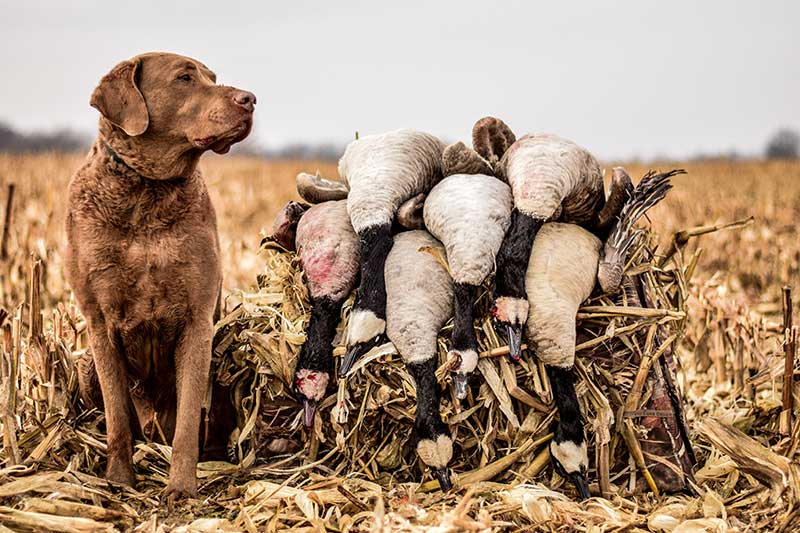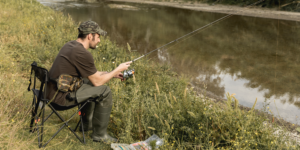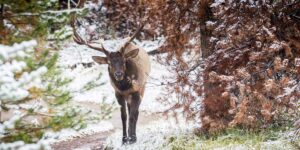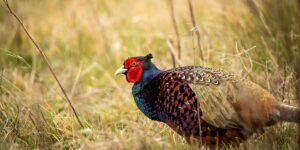Canada geese and other geese species are exceptionally well-known across the U.S., and they are also a favorite species to hunt to by many goose hunters. They’re big birds and make excellent table fare. Read on for advice on how to hunt this iconic species.
Why limit yourself to public land when there are millions of acres of private land to explore.
Best Habitat for Goose Hunting
Habitat for hunting geese differs slightly than from hunting ducks. Geese roost at night on open water and make their way to feeding areas such as cut agriculture fields in the morning.
You will typically find goose hunters set up to hunt Canada geese and other goose species in large ag fields. Geese feed on various grains as their main source of food, so ag fields are where they want to be. With consistent scouting, hunters can find which fields geese are feeding in. Look for oats, barley, wheat and rye in the early season, and bean and corn harvested fields later in the season.
If fields aren’t available to hunt, you can also catch geese over open waters or water where they can “loaf” and see far and wide to feel safe. Generally after feeding in open fields, geese will make their way back to their roosting and loafing waters, which is where you can catch them if you plan it right.
Types of Geese
There are many types geese that make their way across the U.S., and fall into four categories including dark geese, light geese, gray geese, brant, and Emperor geese.
Dark Geese
The most widely distributed is Canada geese which are considered dark geese. The Canada goose is the also the most recognizable thanks to their distinctive black head and neck, grey plumage, and a white cheek patch. They feed on grasses, aquatic plants, alfalfa, and waste grains. Falling under the dark geese category is also that Cackling geese which look similar to Canada geese but are smaller.
Light Geese
Light geese include the well-known snow geese and others. Snows are distinctively white and flock in large numbers. Their population has grown so much that seasons were opened into the fall, winter, and spring and bag limits were increased. They feed on agriculture and are generally so large in numbers that they have destroyed habitats in their wake.
Grey Geese
Grey geese include the specklebelly goose. Often referred to as just “specks,” these geese are distinctive for their black and white markings on their chests. They migrate early and are known for a high-pitched laughing call.
Brant Geese
The Brant are coastal birds and migrate along the Atlantic and Pacific coasts. They feed on aquatic vegetation. The Emperor goose is a trophy bird, one that you may never see as 90 percent of the population is in the western coast of Alaska. Their numbers are very small, so only a few hunters can hunt this special goose each year if they are lucky enough to draw a tag.
Goose Hunting Regulations and Restrictions

Geese are migratory birds so it is required that you purchase not only a hunting license, but also a Federal Duck Stamp if you are 16 years or older before you can legally hunt. The Federal Duck stamp features a new design each year and 98 percent of sales from the purchase of the Duck Stamp goes back to waterfowl conservation. Hunters must sign the face of the stamp in ink before heading afield. Additionally, hunters are typically required to have a harvest information program (HIP) certification, and other endorsements depending on your state.
Waterfowl hunting has seasons like big game hunting, and it varies depending on your region. Generally, goose seasons can run anywhere from September to October in Canada; October to December in the upper midwest; and November to early February for the midwest. Possession limits for dark geese, light geese, and others vary state to state.
Waterfowl hunts require hunters to use only steel or other non-toxic shot. The use of lead shot was banned years ago to save waterfowl species from lead poisoning after research showed millions of ducks died each year from eating lead shot from waterfowl hunting.
Goose Hunting Techniques and Equipment
To hunt geese, you have to choose the right time of day. Goose fields are best to hunt during mornings and evenings when large flocks will leave their roosting sites to feed. During the midday, it’s best to hunt loafing waters. Weather is also a factor when hunting many geese. If the weather remains stable, geese will stick to their feeding routines. If weather conditions are wet, plan on hunting ag fields.
Geese have good eyesight, so you’ll need to ensure that you’re concealed and well. Plan on wearing camouflage, including your head and hands. Try not to carry a shiny barreled gun to the field, instead opt for matte black or better, camo.
A blind is a must to hunt geese. You can utilize standard ground blinds and cover them with hay or corn stalks if hunting open ag fields, or set them against natural cover such as fencerows or rows of trees. Layout blinds are also useful to set up and easily conceal in large agriculture fields. Make sure they match the fields you are hunting so that you don’t stick out like a sore thumb.
Goose decoys are beneficial for hunting Canada geese and while snow goose hunting. Full body decoys help trick geese into landing into your decoy spread. You should utilize full body decoys such as feeder decoys when hunting fields, especially. Anywhere from a small decoy spread to a large will help bring geese into shotgun range.
A goose call is also helpful when goose hunting. Geese respond well to calls as they are a talkative species. Learning to call can be a learning curve, but beneficial in the end to attract high-flying geese into your decoy spreads.
A goose hunter typically will shoot a 12-gauge shotgun. At times, you’ll see goose hunters chamber their guns in 3.5-inch or 3-inches to handle larger loads for the Canada geese and other goose species. For a goose hunt, you’ll want to feed your shotgun with large shot sizes such as No. 1, No. 2, or BB.
The hassle free way to monetize your acreage.
Best States for Goose Hunting
The best states to hunt geese depend on your Flyway and species you want to hunt.
Dark Geese:
Atlantic Flyway
Hunters who want to hunt Canada geese in the Atlantic Flyway should target Pennsylvania, Maryland, or New York.
Mississippi Flyway
Hunters in Illinois and Kentucky see a lot of honkers pass through their state, as well as Minnesota and Michigan.
Central Flyway
If you’re in the central part of the U.S., focus on Kansas, Colorado, Nebraska or Texas if you’re hunting Canada geese.
Pacific Flyway
If you’re on the West coast, Oregon is a honeyhole for Canada geese.
Light Geese:
If you’re wanting to shoot snow geese, set your sights on the Mississippi and Central Flyways, particularly in Texas, Louisiana, and Arkansas. California is also a great state for snows and specklebellies, as well as Pennsylvania and New York.
Where to go Goose Hunting: Public vs Private Land
As with other types of waterfowl hunting, goose hunting can be done on both private or public land, with advantages to both.
Public Land
Hunting geese on public land can happen in every state. However, in some states it is required that hunters draw for a hunting blind on certain Wildlife Management areas or lakes. That means that you could end up out of luck for the year and a certain area that geese frequent may not be accessible to you despite it being public land. Not all areas are like this, and hunters may find public waters or Walk-In areas with cut agriculture that are perfect feeding spots for Canada geese or light geese.
Public land is free to hunt, which saves your wallet after spending money on decoys and other necessary gear for waterfowl hunting.
Private Land
Hunters who have access to private land have the advantage of hunting land that is all to themselves. Often times private lands have not seen other hunters, meaning geese do not feel hunting pressure and will take to loafing and feeding on private lands because of safety. This gives private land hunters an edge and the possibility of seeing more birds fly into their decoy spread.
Click on one of the map pins below to learn more about private land for waterfowl hunting.
[wingit_simple_map activities=”waterfowl”]
FAQ
When is goose hunting season?
Seasons for goose hunting depend on your Flyway location. Generally speaking, goose hunting starts in October and can run through February. Check your states hunting regulations before heading afield to ensure you are legally in season to hunt geese.
What is the best choke to use for goose hunting?
Goose hunters will typically use an improved cylinder choke tube. This is a good universal tube for shooting at longer distances and close flying birds
What size shot do you use for goose hunting?
Often times you may encounter geese flying into your spread while duck hunting, so you’ll need to ensure that you’re using steel shot if duck hunting. Most goose hunters will use No. 1, No. 2, or BB size shot to bring down big honkers.
How many decoys do you need for goose hunting?
Goose hunting is best done with full body decoys. A decoy spread can be small or large, but be sure to mix in different body postures such as feeder decoys, looking decoys, and loading decoys which are decoys that mimic geese sitting on the ground.
Are goose good to eat?
Geese are a delicious if cooked correctly. Geese are a dark meat bird, so be careful not overcook them or the meat will be too tough to eat


